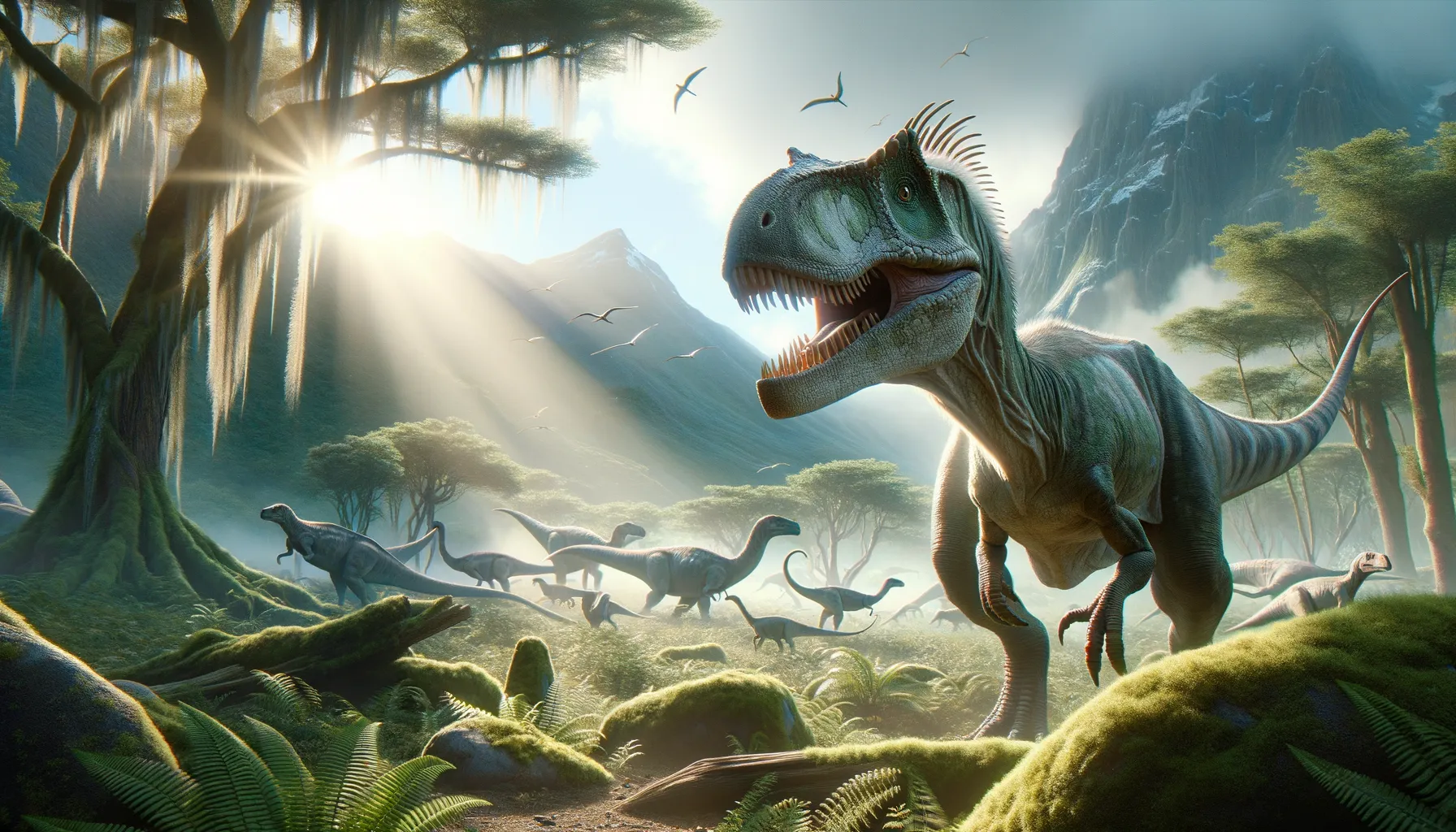
Richardoestesia
Swift predator of the Cretaceous era.
Period
Cretaceous
Length
Roughly 2 meters in length.
Height
Around 1 meter tall.
Weight
Approximately 20 kilograms.
Richardoestesia was a small, agile theropod dinosaur known primarily from its distinctive teeth. It lived during the Late Cretaceous period and is believed to have been a fairly versatile predator. Despite limited fossil evidence, its dentition suggests a carnivorous diet that might have included small vertebrates or even scavenging. Its remains have been found in North America, indicating it was part of a diverse ecosystem.
Diet
Richardoestesia likely had a carnivorous diet, supported by its sharp, blade-like teeth. These teeth suggest it could efficiently prey on small vertebrates or act as a scavenger. Its diet might have varied based on availability, and adaptability was key to survival.
Hunting
This dinosaur was probably a solitary hunter, using its speed and agility to catch small prey. Its sharp teeth were well-suited for gripping and tearing flesh. It might have also scavenged, taking advantage of carcasses left by larger predators.
Environmental challenges
Living during the Late Cretaceous, Richardoestesia faced challenges like climatic shifts and competition for resources. Periodic changes in temperature and vegetation would have impacted food availability. Predators and competition from other carnivores also posed significant threats, requiring it to adapt to survive.
Speed
Moderate, swift for a small theropod.
Lifespan
Estimated 10-20 years based on similar species.
First discovery
First discovered in the Judith River Formation, Montana.
Fun Facts
- Richardoestesia is known primarily from its distinctive teeth, which are small, curved, and have finely serrated edges.
- Unlike many dinosaur discoveries, Richardoestesia's remains have been found in both North America and Europe, suggesting it was quite widespread.
- It lived during the Late Cretaceous period, around 70 to 66 million years ago, just before the dinosaurs went extinct.
- The genus is named after Richard Estes, a paleontologist who made significant contributions to the study of fossil reptiles.
- Richardoestesia's exact size and appearance are a mystery, as full skeletons have yet to be discovered—it's known mainly from teeth and jaw fragments.
- Some scientists think Richardoestesia might have been a small, agile predator, possibly hunting small animals like lizards and mammals.
- Despite its puzzling nature, Richardoestesia has added valuable information to our understanding of dinosaur diversity at the end of the Mesozoic Era.
Growth and Development
Richardoestesia likely experienced rapid growth in its early years to quickly reach a size that could evade predators. Fossil evidence suggests it had a lightweight build, supporting swift growth and development. Growth rates would have fluctuated based on environmental conditions and food access.
Habitat
Richardoestesia lived in diverse habitats ranging from river valleys to forested regions. These environments provided ample cover and varied food opportunities. Its presence in multiple ecosystems indicates it was adaptable, surviving in both arid and lush areas.
Interaction with other species
Richardoestesia likely came into contact with both prey and competing predators. Its interactions with other small dinosaurs would have been complex, potentially involving competition for food. It might have maintained territories or engaged in opportunistic feeding behaviors.
Natural lifespan
Richardoestesia had a natural lifespan of up to 20 years.
Reproduction
Richardoestesia likely reproduced by laying eggs in secure nests, similar to other theropods. Nesting sites would have been chosen for protection from predators and environmental hazards. Parental care might have included guarding nests from threats.
Social behaviour
Richardoestesia might have lived a solitary life, like many small theropods, focusing on individual survival. While hunting, it could have briefly interacted with others over territory or food resources. Limited evidence suggests any complex social structures.
Fossil locations
Richardoestesia fossils have primarily been found in North America, particularly in the Judith River Formation. This region has yielded various dinosaur fossils, painting a picture of a diverse prehistoric ecosystem. Despite the rarity of full skeletons, individual teeth are frequently discovered.
